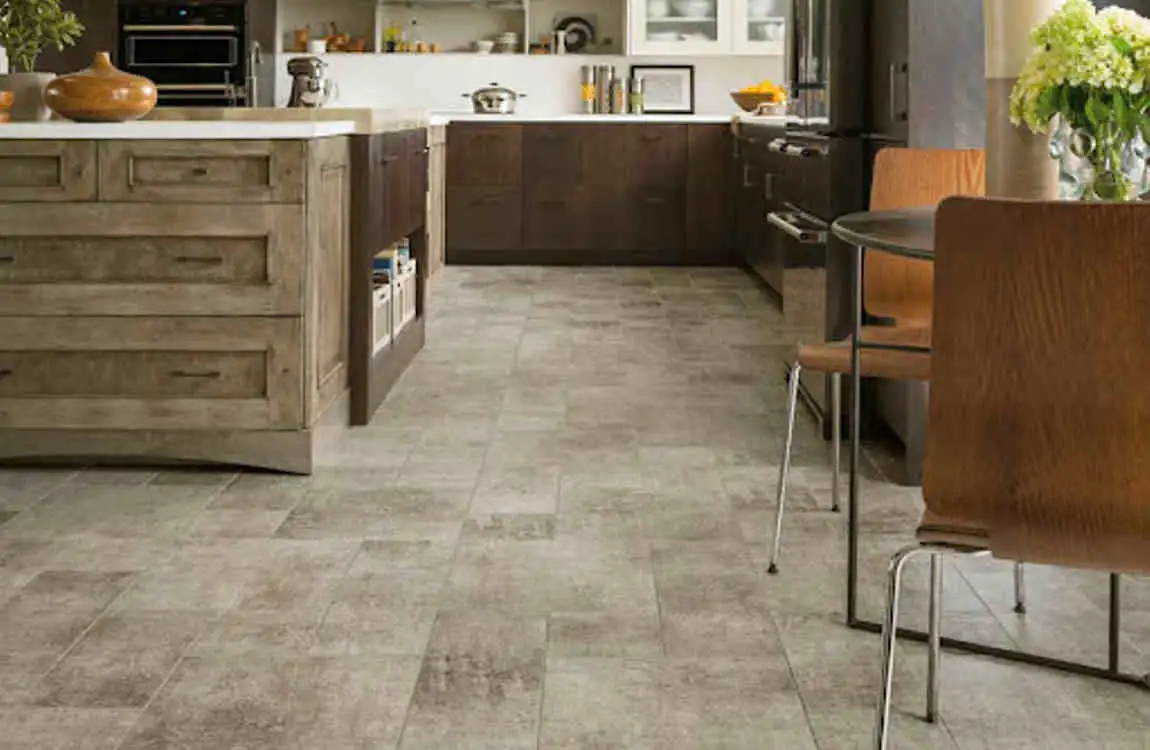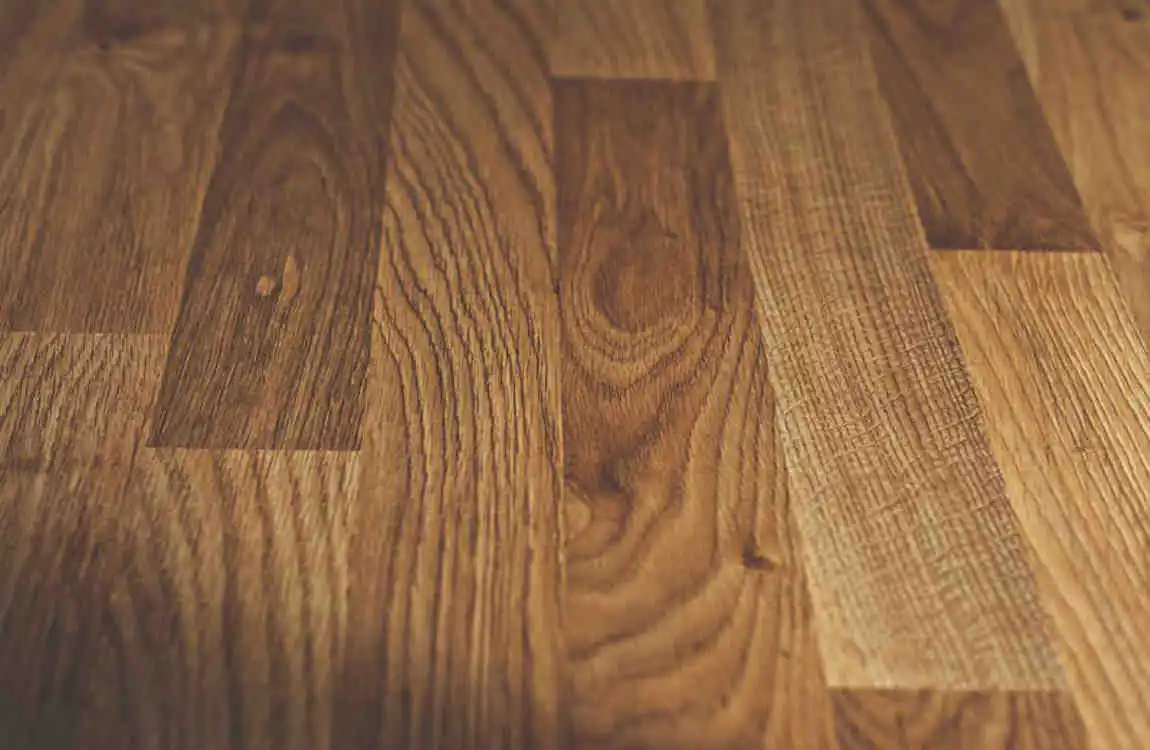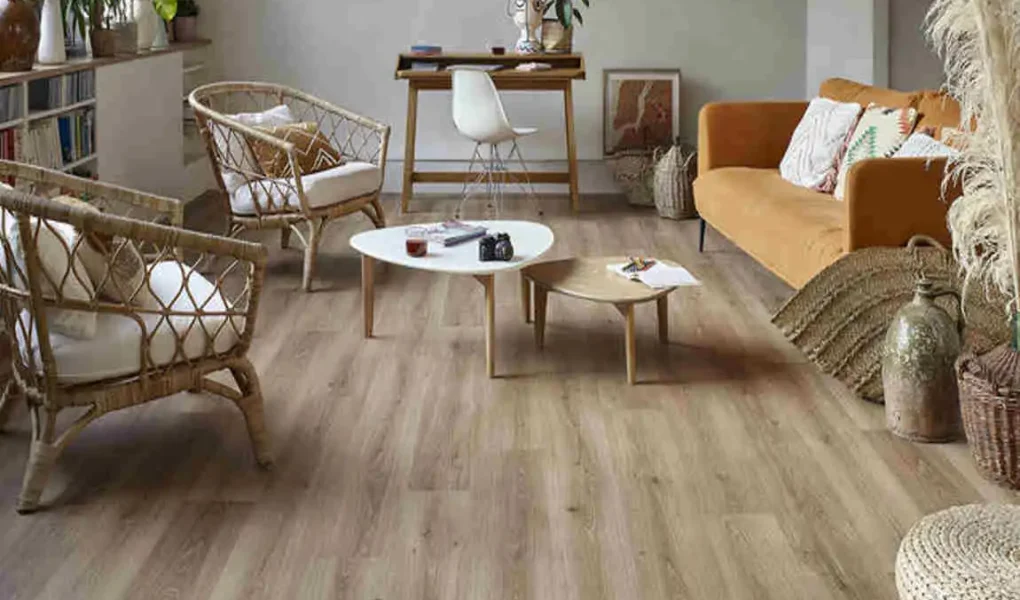Vinyl flooring has become a favourite choice for many homeowners in recent years, and for good reason. It’s affordable, versatile, and comes in a wide range of designs that can mimic wood, stone, or tile. But if you’re wondering what cushioned vinyl flooring is, you’re in the right place.
Cushioned vinyl flooring takes the benefits of traditional vinyl a step further by adding a soft, supportive layer underneath. This means you get a floor that’s not only stylish and durable but also comfortable to walk and stand on — perfect for busy households, families, or anyone who spends a lot of time on their feet.
From its construction and benefits to where it works best in your home, installation tips, and how it compares to other flooring options, by the end, you’ll be fully equipped to decide if it’s the right choice for you.
What Is Cushioned Vinyl Flooring?

Definition and Explanation
At its core, cushioned vinyl flooring is a type of vinyl flooring that includes an extra soft layer beneath the top vinyl surface. This cushioning usually comes from foam or rubber materials designed to absorb impact and provide a more comfortable feel underfoot.
Unlike traditional vinyl, which is often thin and hard, cushioned vinyl offers a gentle bounce, making it easier on your feet, knees, and even your back. This feature makes it especially popular for kitchens, playrooms, and other spaces where you stand for long periods.
How It Differs From Other Flooring Types
Traditional vinyl flooring is a single layer or a few thin layers of vinyl without that soft padding. Other flooring options, such as hardwood or tile, lack cushioning, making them hard and sometimes cold surfaces.
Cushioned vinyl flooring stands apart because it combines the waterproof and durable top vinyl layer with a soft underlayer, giving you the best of both worlds: practicality and comfort.
Construction Details
Cushioned vinyl flooring is usually made of:
- Vinyl wear layer: The top protective surface that resists scratches and stains.
- Design layer: This layer carries the printed design or pattern, whether it’s wood grain, stone, or abstract textures.
- Foam or rubber cushioning layer: The key feature that adds softness and insulation.
- Backing layer: Provides stability and support to the whole floor.
Types of Cushioned Vinyl Flooring Available
You can find cushioned vinyl flooring in several forms:
- Sheet vinyl with cushioning: Large rolls that cover floors seamlessly.
- Luxury Vinyl Tiles (LVT) or Planks (LVP) with padding: These look like real wood or stone but have built-in cushion layers.
- Loose lay cushioned vinyl: Tiles or planks that don’t require glue, held in place by their weight and friction.
Key Benefits of Cushioned Vinyl Flooring

Comfort: Easy on Your Feet
One of the biggest draws of cushioned vinyl is its softness. The foam or rubber layer absorbs shock, reducing fatigue when you stand or walk for long periods. This is a blessing in kitchens or laundry rooms where you spend a lot of time standing.
Durability: Built to Last
Cushioned vinyl isn’t just comfy; it’s tough. It resists scratches, dents, and stains far better than many other flooring types. Its wear layer protects against daily wear and tear, making it ideal for busy families, pets, and active lifestyles.
Noise Reduction and Sound Absorption
Thanks to the soft underlayer, cushioned vinyl flooring reduces noise dramatically. This helps in multi-level homes or apartments where footsteps can carry and disturb people below.
Easy Maintenance and Cleaning
Unlike carpet, cushioned vinyl is a breeze to clean. A simple sweep or mop is usually enough. It resists staining and doesn’t trap dust or allergens, making it a hygienic choice.
Hypoallergenic and Safe for Families
The smooth, sealed surface discourages dust mites and allergens, making cushioned vinyl a smart pick for households with allergy sufferers or pets.
Cost-Effectiveness
When compared to hardwood or tile, cushioned vinyl offers a similar aesthetic at a fraction of the price. Its durability also means fewer repairs and replacements, saving money in the long run.
How Cushioned Vinyl Flooring Is Made
Components Explained
Cushioned vinyl flooring consists of several layers working together:
| Layer | Purpose |
|---|---|
| Wear layer | Protective top coat against scratches and stains |
| Design layer | Printed surface that mimics natural materials |
| Cushioning layer | Foam or rubber that adds softness and impact absorption |
| Backing layer | Stabilizes and supports the entire flooring |
Manufacturing Processes
- Extrusion: Vinyl materials are melted and pushed through a mold to form sheets.
- Lamination: Layers are bonded together under heat and pressure to create a strong, unified product.
- Embossing: Textures are pressed into the surface to mimic wood grain or stone, adding realism.
Environmental and Sustainability Considerations
Many manufacturers now focus on low-VOC (volatile organic compound) emissions, making cushioned vinyl safer for indoor air quality. Some products are also recyclable, contributing to greener home choices.
Where to Use Cushioned Vinyl Flooring in Your Home
High-Traffic Areas: Kitchens, Hallways, Entryways
Cushioned vinyl stands up well to heavy foot traffic and spills. Its durability and comfort make it perfect for kitchens where you’re on your feet often, or hallways where many pass through daily.
Pros:
- Easy to clean spills
- Comfortable standing surface
- Resists scratches and dents
Cons:
- It can show wear over many years if not maintained
Bathrooms and Laundry Rooms
Its moisture resistance is a massive advantage in wet areas. Cushioned vinyl won’t warp or swell like wood and provides warmth underfoot compared to cold tiles.
Living Rooms and Bedrooms
Comfort is key in these spaces. The soft cushion makes walking barefoot enjoyable, and its quietness helps create a relaxing atmosphere.
You may also read (simple steps to spiritually clean your home).
Basements
Basements often feel cold and damp, but cushioned vinyl adds insulation and warmth, making these rooms more comfortable and usable.
Installation Process and Tips
DIY vs Professional Installation
Cushioned vinyl can be installed by confident DIYers, especially those with loose-lay or click-lock types. But professional installation ensures a flawless finish and addresses subfloor issues.
Subfloor Preparation
A clean, dry, and level subfloor is essential for a smooth and long-lasting installation. Any bumps or moisture problems should be fixed beforehand.
Installation Methods
- Glue-down: Adhesive applied to the subfloor for a permanent bond.
- Click-lock: Planks or tiles snap together without glue.
- Loose lay: Tiles or sheets held in place by weight and friction.
Time and Cost
Installation time varies by method and room size, but typically takes 1 to 3 days. Costs include materials, labor (if hired), and subfloor prep.
Maintenance Tips Post-Installation
- Use furniture pads to avoid dents.
- Clean spills promptly.
- Avoid harsh chemicals that can degrade the wear layer.
Comparing Cushioned Vinyl Flooring With Other Flooring Types
| Feature | Cushioned Vinyl | Hardwood | Laminate | Tile | Carpet |
|---|---|---|---|---|---|
| Comfort | High due to foam layer | Medium | Medium | Low | High |
| Durability | High | High (can scratch/dent) | Medium | Very High | Low |
| Water Resistance | Excellent | Low | Low to Medium | Excellent | Poor |
| Maintenance | Easy | Moderate | Easy | Moderate | Difficult |
| Cost | Affordable | Expensive | Affordable | Medium to High | Affordable |
| Noise Absorption | Good | Moderate | Moderate | Poor | Excellent |
Common Misconceptions About Cushioned Vinyl Flooring
It’s Not Just Cheap Linoleum
Many people think that vinyl flooring is outdated or of low quality. Modern cushioned vinyl comes in elegant patterns and textures that rival natural wood or stone.
Durability Concerns
Some worry it won’t last. In reality, cushioned vinyl’s wear layer protects it from scratches, dents, and water damage, making it a durable option for busy homes.
Confusing Cushioned Vinyl With Other Vinyl Types
Not all vinyl flooring has cushioning. Traditional vinyl is thinner and more rigid, while cushioned vinyl offers that extra comfort and insulation layer.
How to Choose the Right Cushioned Vinyl Flooring for Your Home
Thickness and Cushioning Levels
Thicker flooring usually means more cushioning and comfort. Aim for at least 3mm thickness for daily comfort.
Wear Layer Importance
A thicker wear layer (measured in mils) means better protection against scratches and stains. For homes with pets or children, consider a minimum of 20 mil.
Style, Texture, and Colour
Choose designs that match your home’s style. From rustic wood grains to sleek modern patterns, there’s a look for everyone.
Considerations for Pets, Kids, and Allergy Sufferers
Look for scratch-resistant and hypoallergenic options. Smooth surfaces make cleaning pet hair and dust easier.
Budget and Warranty
Set a budget that balances quality and cost. Many cushioned vinyl options come with warranties, giving peace of mind.
Caring for and Maintaining Cushioned Vinyl Flooring
Daily and Weekly Cleaning
Sweep or vacuum regularly to remove dirt. Mop with a damp mop and mild cleaner weekly.
Best Products for Cleaning
Use vinyl-safe cleaners. Avoid abrasive or ammonia-based products that can damage the surface.
Preventing Damage
Use furniture pads and avoid dragging heavy items—place mats near entrances to catch grit.
Repair Tips
Minor scratches can sometimes be buffed or filled with vinyl repair kits. For dents, furniture pads help prevent further damage.
When to Replace or Restore
If your floor shows significant wear or damage, professional restoration or replacement might be needed. Regular care extends life considerably.
Conclusion
Cushioned vinyl flooring perfectly blends comfort and durability to meet the needs of modern homes. Whether you’re renovating a kitchen, upgrading a basement, or adding warmth to a bathroom, it offers a practical, stylish, and cost-effective solution.
If you want a floor that feels great underfoot, stands up to life’s demands, and looks fantastic, consider cushioned vinyl seriously. Ready to explore options? Visit homeimprovementcast.co.uk for expert advice, product recommendations, and trusted installers near you.
Your next home upgrade could be just a step away — on cushioned vinyl flooring!
You may also read (laminate flooring expansion what homeowners need to know).

